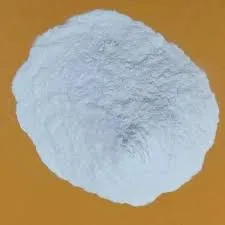
Dec . 20, 2024 21:56 Back to list
Understanding Hydroxypropyl Methyl Cellulose and Its Applications in Various Industries
Hydroxypropyl Methyl Cellulose An Overview
Hydroxypropyl methyl cellulose (HPMC) is a cellulose derivative that has garnered widespread attention for its versatile applications in various industries. With the CAS number 9004-65-3, HPMC is a non-ionic, water-soluble polymer that possesses unique properties, making it suitable for food, pharmaceuticals, construction, cosmetics, and more.
Chemical Structure and Properties
HPMC is derived from natural cellulose, which is a fundamental component of plant cell walls. The modification process involves the substitution of hydroxyl groups in cellulose with hydroxypropyl and methyl groups. This chemical modification results in a compound with enhanced solubility in water and improved functionality. HPMC is available in various grades, characterized by different viscosity levels and degrees of substitution, allowing for customization based on specific applications.
One of the most remarkable properties of HPMC is its thickening ability. When mixed with water, HPMC forms a viscous gel that can stabilize emulsions, enhance the texture of food products, and serve as a binder in pharmaceutical formulations. Its thermal gelation and film-forming capabilities also make it a preferred choice in many applications. Furthermore, HPMC is non-toxic and biodegradable, aligning well with the growing emphasis on sustainability in today's industries.
Applications
1. Food Industry
HPMC is widely used as a food additive due to its excellent stabilizing and emulsifying properties. It is often found in gluten-free baking products, where it helps improve the texture and moisture retention of dough. Additionally, HPMC acts as a thickening agent in sauces, dressings, and other liquid products, ensuring a smooth consistency and preventing separation.
hydroxypropyl methyl cellulose cas number

2. Pharmaceutical Industry
In pharmaceuticals, HPMC serves multiple roles. It is commonly utilized as a binder in tablet formulations, promoting cohesion and structural integrity. Its controlled-release properties make it ideal for designing sustained-release medications, allowing for prolonged therapeutic effects. Moreover, HPMC’s hydrophilic nature aids in the solubility of poorly soluble drugs, enhancing bioavailability.
3. Construction Industry
The construction sector benefits significantly from HPMC, where it is often incorporated into cement-based products such as tile adhesives, plasters, and mortars. HPMC enhances workability, improves water retention, and increases adhesion to substrates. This results in more efficient application processes and improved overall performance of construction materials.
4. Cosmetics and Personal Care
In cosmetics, HPMC is valued for its thickening and film-forming properties. It is commonly found in creams, lotions, and gels, providing a desirable texture and enhancing product stability. HPMC also acts as a suspending agent in formulations containing particulate matter, ensuring even distribution and preventing settling.
Conclusion
Hydroxypropyl methyl cellulose is a multifunctional compound that has made significant inroads into various industries. Its unique properties, including thickening, emulsifying, and film-forming abilities, have made it an invaluable ingredient in food, pharmaceuticals, construction, and cosmetics. The versatility and safety of HPMC highlight its potential in innovations aimed at sustainability and efficiency. As industries continue to evolve and demand more functional ingredients, HPMC is poised to play a critical role in meeting these challenges. Through ongoing research and development, the applications of HPMC are likely to expand, further solidifying its status as a key player in the realm of chemical additives.
-
Versatile Hpmc Uses in Different Industries
NewsJun.19,2025
-
Redispersible Powder's Role in Enhancing Durability of Construction Products
NewsJun.19,2025
-
Hydroxyethyl Cellulose Applications Driving Green Industrial Processes
NewsJun.19,2025
-
Exploring Different Redispersible Polymer Powder
NewsJun.19,2025
-
Choosing the Right Mortar Bonding Agent
NewsJun.19,2025
-
Applications and Significance of China Hpmc in Modern Industries
NewsJun.19,2025







